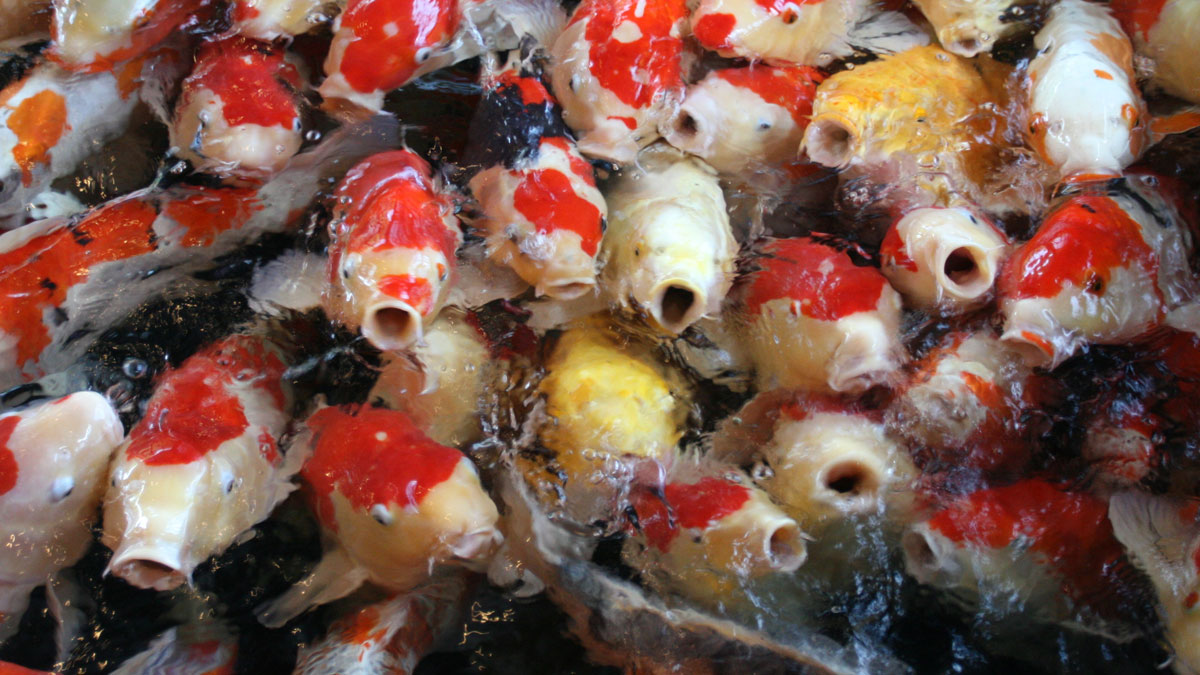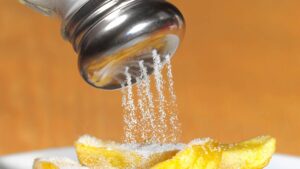As the fertiliser bottleneck hits food supplies, these ASX small caps are racing into production

Picture: Getty Images
The bottleneck on global phosphate and potash fertiliser supplies – brought about by a combination of sanctions on Russian fertilisers, existing Chinese export bans, supply chain disruptions and gas price rises – has sent prices soaring and is impacting on food production.
Fertiliser prices remain at historically high levels despite the basket of fertiliser prices measured by CRU’s fertiliser index slipping more than 50 points since its record high of 390 in March.
Our chart of the week shows CRU’s #fertilizer price index down over 50 points since late March from its record high of 390. It is now below the previous 360 record set in 2008, but remains at a historically high level #agriculture #commodities pic.twitter.com/BZbw9f0WSc
— Fertilizer Week (@FertilizerWeek1) May 24, 2022
And just to add salt into the wound, a huge consignment of potash fertiliser was lost recently after a train derailment in Alberta, Canada.
Further underscoring how valuable fertiliser has become, some people are resorting to theft in order to get their hands on the material with police in Western Australia investigating the theft of some 36,000 litres of liquid fertiliser from a rural property near Toodyay.
So how is the current geopolitical situation impacting on supplies and prices of phosphate and potash fertilisers?
Fertilisers and geography
There are three principal types of fertilisers; namely nitrogen, phosphorus and potassium.
Production of the first – in the form of ammonia and urea – typically involves converting natural gas. While prices have gone up due to the gas crisis in Europe, plants producing nitrogen fertilisers are found throughout the world.
However, both phosphorus and potassium fertilisers are more constrained by the tyranny of geography and geology as they are sourced from minerals that are only found in certain regions.
Phosphorus fertilisers, which are linked to a plant’s ability to use and store energy, including the process of photosynthesis, are produced from rock phosphate.
China is the single largest producer of rock phosphate – outstripping both of the next largest producers Morocco-West Sahara and the US – which, given its ban on exports, neatly explains why prices have soared.
Meanwhile, potassium is essential for water uptake and for synthesising plant sugars for use as food.
The most common form of potash fertiliser is Muriate of Potash (MOP), a 60 to 70mtpa global market favoured for bulk crops such as wheat, oats and barley due to its lower cost.
However, its high chloride content means that the more expensive Sulphate of Potash (SOP) – often synthesised from MOP – is used for high-value, chloride-intolerant crops such as avocados or where soils have high salinity.
SOP production from MOP requires plenty of energy, which adds further to its cost, though there is growing interest in SOP production from potassium-rich brines.
But for now, potash typically comes from either underground or solution mining with Canada, Russia, Belarus and China accounting for about 80% of the world’s production.
With sanctions on Russia and Belarus as well as China’s export ban, this means that Canada is now the world’s single remaining major producer of potash – a development that neatly explains why potash prices have more than doubled since early 2021.
Impacting food production
The fertiliser shortage has already started to bite with both global corn and wheat production down according to the US Department of Agriculture.
This had led Norwegian fertiliser giant Yara to tell Reuters that donors are urgently needed to close the UN’s US$10bn food program funding gap.
“The world has realised that food can be a weapon and it is being currently used,” Yara chief executive officer Svein Tore Holsether noted.
“We need to work on an emergency response for the most vulnerable. For that we urgently need to unlock funds of the world food programme.”
He added that Europe and the rest of the world needed to build a system that is less reliant on Russia while taking a green approach to producing fertiliser.
However, crisis also brings with it opportunity and there are a number of junior ASX fertiliser plays poised to play a part in alleviating the shortfall.
ASX Small Cap phosphate and potash fertiliser producers
Agrimin (ASX:AMN)
0.50c Up 41.43% this year
Agrimin is a near-term producer that expects its low-cost Mackay SOP project in WA to be shovel-ready by the middle of this year.
The company’s DFS has demonstrated economics with a post-tax real NPV (net present value) of US$655 million, and IRR (internal rate of return) of 21pc, based upon a total cash cost of US$159 per tonne free on board (FOB) and a flat SOP price of US$500 per tonne.
With the April binding offtake agreement for the supply of 50,000tpa of SOP from Mackay’s potash for sale and distribution in the US, the company has already committed 70% of its planned SOP production to long-term contracts to support the $640m in project funding.
The project received a boost earlier this month after the West Australian government committed to contributing its 20% share, or $100m, to the cost of completely sealing the Tanami Road – a key part of the project’s trucking route from the project to Wyndham Port – to its border with the Northern Territory.
Avenira (ASX:AEV)
0.012 Down 40% this year
While the company has owned the 550Mt Wonarah phosphate project in the Northern Territory since 2007, it has been in mothballs since 2013 before being brought back on the table when phosphate prices started soaring last year.
Investors have cottoned on to the advanced nature of the project, allowing the company to raise about $1.45m through a pro-rata non-renounceable entitlement offer of shares priced at 2.2c to existing eligible shareholders.
A new scoping study (the first proper look at the economics of building a project) is now investigating the development of Wonarah to produce critical end products for LFP (lithium iron phosphate) batteries and agriculture markets.
PhosCo (ASX:PHO)
0.15 Up 87.50% this year
PhosCo holds the Chaketma phosphate project in Tunisia that has a total resource of 148.5Mt at 20.6% P2O5 after upgrading resources at the KEL deposit by 50%.
The project is currently expected to fuel a 1.5Mtpa project with a 30-year mine life.
The project has ready access to infrastructure such as road and rail, gas and power.
Consideration is also being given for wind, solar and treatment routes as part of the company’s ESG strategy.
Australian Potash (ASX:APC)
0.066 Down 5.71% this year
Australian Potash’s Lake Wells SOP project about 500km northeast of Kalgoorlie is fully permitted with mining leases, mining proposal, mine closure plan and environmental approval in place.
The company has already completed 20 of the 79 bores into the brine reservoir that it needs for steady state operations.
Offtake agreements are already in place for 90% of the expected 170,000tpa production of SOP.
Capex for Lake Wells, which is expected to have a mine life of 30 years, is estimated at $266m while annual average EBITDA is pegged at about $88m on a SOP price of US$550 per tonne.
Highfield Resources (ASX:HFR)
0.90 Up 10.49% this year
The Muga project in Spain is currently envisaged as a two phase project that will produce a total of 1Mtpa of MOP.
Mineralisation will be mined using conventional underground room and pillar methods with declines accessing shallow material.
The material will then be processed into MOP using conventional flotation and crystallisation processing.
Highfield recently executed a project financing mandate with a group of experienced European mining finance lenders for the €312.5m ($470.9m) senior secured project financing package.
South Harz Potash (ASX:SHP)
0.14 Down 14.71% this year
Located in a historic potash region of central Germany, South Harz’s namesake project is currently awaiting a resource upgrade at the Ohmgebirge licence following the successful drilling of two confirmatory drillholes.
This is expected to allow for a comprehensive Scoping Study to be announced for the licence during July 20222.
South Harz currently has a resource of 5.3 billion tonnes grading 10.8% K2O across four wholly-owned project areas.
It comprises three perpetual potash mining licences, Ohmgebirge, Ebeleben and Mühlhausen-Nohra, and two potash exploration licences, Küllstedt and Gräfentonna, that cover a total area of 659km2.
Trigg Mining (ASX:TMG)
0.083 Down 24.55% this year
Trigg’s Lake Throssell SOP project in Western Australia has an Inferred and Indicated resource of 14.4Mt of SOP, enough to fuel a 21-year mine life under the current Scoping Study.
The project is currently expected to deliver pre-tax net present value and internal rate of return of $364m and 18% respectively using a US$550/t price assumption for SOP.
Plans are afoot to carry out aircore drilling at sites identified by geophysical surveys to further refine the locations for test production bores as well as installation of test production bores and hydraulic testing of the aquifer to determine aquifer properties, brine grade and allow estimates of sustainable pumping rate.
This is expected to start in the third quarter to support the pre-feasibility study and any future ore reserve estimates.
BCI Minerals (ASX:BCI)
0.36 Down 15.12% this year
BCI Minerals officially started construction of its Mardie salt and SOP project in WA in April.
The $1.2bn project will be the first major salt development in the state in 20 years and is expected to produce 5.35 million tonnes of salt and 140,000 tonnes of SOP each year when it’s operational.
Mardie will ultimately include a 100sqkm evaporation pond and crystalliser system, two processing plants and a new export facility. It will be driven sustainably by inexhaustible seawater and 99% natural sun and wind energy.
The project has sufficient resources for a lengthy 60-year mine life.
MinBos Resources (ASX:MNB)
0.17 Up 21.43% this year
This March the company finalised the DFS design for its Cabinda Phosphate Fertiliser Plant in Angola, Africa.
The plant has been designed with an initial production capacity of 150,000tpa with capability to expand up to 450,000tpa.
And commissioning is expected in H1 2023.
“The company is looking forward to delivering the DFS and Final Investment Decision in the coming months, as we prepare to get into production in the first half of 2023,” CEO Lindsay Reed says.
Kalium Lakes (ASX:KLL)
0.089 Down 31.54% this year
One of the few producers featured here, Kalium Lakes currently expects to restart its SOP purification plant in June after experiencing some start-up difficulties.
Its Beyondie SOP project in WA is expected to be operating at an ~80,000tpa SOP production run rate by Q1 CY2023, with the targeted 120Ktpa run rate established by Q3 CY2024.
First stage production is already tied up in a 10-year offtake deal with German fertiliser king K+S, which currently supplies more than 60 per cent of the Australian and New Zealand SOP markets.
Centrex (ASX:CXM)
0.14 Up 75% this year
Construction is currently ongoing at the company’s 800,000tpa Ardmore phosphate project in Queensland with first production expected in July this year.
Earlier this month, the company reached an agreement for a trial shipment of 5,000 wet tonnes of beneficiated phosphate rock to Ballance Agri-Nutrients.
The agreement includes a first right of refusal to Ballance to purchase up to 20% of the production at Ardmore under a three-year offtake agreement.
Importantly, Centrex now has agreements covering 90% of its first three years’ of production to major customers in Australia, New Zealand and Asia.
At Stockhead we tell it like it is. While PhosCo is a Stockhead advertiser, it did not sponsor this article.

UNLOCK INSIGHTS
Discover the untold stories of emerging ASX stocks.
Daily news and expert analysis, it's free to subscribe.
By proceeding, you confirm you understand that we handle personal information in accordance with our Privacy Policy.








